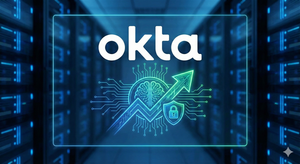
Washington D.C., September 30, 2025 – As the deadline for federal funding approaches, the specter of a potential US government shutdown is sending ripples of anxiety through global financial markets, with stock futures experiencing heightened volatility and a palpable sense of uncertainty. The looming political impasse, a recurrent feature of American governance, threatens to disrupt essential government functions and economic data flows, leaving investors and policymakers navigating an increasingly opaque landscape.
The immediate implications are clear: a significant uptick in market turbulence. Stock futures have already begun to reflect this apprehension, with an observed dip as the September 30th deadline draws near. This initial negative reaction is largely driven by the uncertainty surrounding the duration and scope of a potential shutdown, and the potential for a "data blackout" that could obscure critical economic indicators, making it challenging for market participants to accurately assess the nation's economic health and for the Federal Reserve to calibrate monetary policy.
The Recurring Specter of Gridlock: A Deep Dive into the Shutdown Threat
The current unease stems from the perennial struggle between Congress and the White House over appropriations, a battle that often culminates in a funding gap when a new fiscal year begins without all necessary spending bills enacted. While the specifics of the current legislative deadlock remain fluid, the pattern is familiar: disagreements over spending levels, policy riders, or debt ceiling considerations often push lawmakers to the brink, with the government's operational continuity hanging in the balance.
The timeline leading up to this moment typically involves weeks, if not months, of intense negotiations, debates, and political posturing. As of September 30, 2025, the legislative clock is ticking loudly, with various factions in Congress vying for their priorities to be included in any funding package. Key players involved are, as always, the White House, the leadership of both the House of Representatives and the Senate, and the various caucuses within both parties, each with their own demands and red lines. The initial market reaction, as evidenced by the dip in stock futures, underscores the sensitivity of investors to political risk, even if historical data suggests that short-term shutdowns often have a limited lasting impact on broader economic fundamentals. However, the immediate disruption to federal services, the furloughing of non-essential government employees, and the potential delay of critical economic reports are sufficient to trigger a cautious, if not outright negative, response from traders.
Companies on the Brink: Potential Winners and Losers from a Shutdown
A US government shutdown, while often temporary, can create distinct winners and losers among public companies, primarily based on their reliance on federal contracts, regulatory oversight, or the stability of consumer spending and economic data. The current looming shutdown around September 30, 2025, is no exception, prompting investors to scrutinize portfolios for potential vulnerabilities and unexpected opportunities.
Companies heavily reliant on government contracts are typically among the most vulnerable. Defense contractors like Lockheed Martin (NYSE: LMT), Raytheon Technologies (NYSE: RTX), and Northrop Grumman (NYSE: NOC), while often having long-term contracts, can face payment delays, project stoppages, and uncertainty regarding future funding. Similarly, IT service providers to federal agencies, such as Leidos Holdings (NYSE: LDOS) or Booz Allen Hamilton (NYSE: BAH), could see their revenue streams impacted. Healthcare companies, particularly those with significant exposure to Medicare and Medicaid programs, like UnitedHealth Group (NYSE: UNH) or CVS Health (NYSE: CVS), might experience volatility due to concerns about program administration and payment processing, although essential services generally continue.
Conversely, some sectors and companies might be relatively insulated or even see a temporary benefit. Consumer staples companies, such as Procter & Gamble (NYSE: PG) or Coca-Cola (NYSE: KO), which provide essential goods, tend to be more resilient as consumer demand for their products remains relatively stable regardless of government operations. Companies in the utilities sector, like NextEra Energy (NYSE: NEE), which provide essential services, are also less directly impacted. Furthermore, some companies involved in cybersecurity or private sector solutions that can step in to fill gaps left by reduced government services might find niche opportunities, though these are typically not large enough to offset broader market declines. The financial sector, represented by major banks like JPMorgan Chase (NYSE: JPM) and Bank of America (NYSE: BAC), could experience increased volatility but typically have robust contingency plans in place, though any significant disruption to economic data could impact lending and investment decisions.
Broader Implications: Navigating the Macroeconomic and Regulatory Fallout
The potential US government shutdown transcends immediate market jitters, carrying wider significance for the broader economy, regulatory landscape, and global financial standing. This recurring political drama around funding deadlines, such as the one anticipated on September 30, 2025, fits into a broader trend of increased political polarization and legislative gridlock that has become a defining characteristic of modern American governance.
One of the most significant ripple effects is on economic data. A shutdown can halt the publication of crucial economic indicators from agencies like the Bureau of Labor Statistics and the Census Bureau. This "data blackout" leaves businesses, investors, and the Federal Reserve operating with incomplete information, hindering accurate economic forecasting and policy formulation. For instance, delays in inflation or employment reports could complicate the Fed's interest rate decisions, adding another layer of uncertainty to an already complex economic environment. Regulatory bodies like the Securities and Exchange Commission (SEC) and the Commodity Futures Trading Commission (CFTC) would also operate with reduced staff, potentially delaying corporate filings, IPO approvals, and enforcement actions, which could impact capital markets and ongoing business operations.
Historically, the economic impact of short government shutdowns has often been temporary and relatively minor, with a quick rebound once funding is restored. For example, the 2013 shutdown, lasting 16 days, was estimated to have shaved about 0.2-0.6 percentage points off fourth-quarter GDP growth, with a rapid recovery thereafter. However, a prolonged shutdown could lead to more substantial, albeit still largely temporary, economic damage, impacting consumer confidence and business investment. International perceptions of US fiscal stability could also be strained, potentially affecting the dollar's strength and the perceived safety of US Treasury bonds, though these usually recover quickly. The repeated threat of shutdowns also erodes public trust in government and creates an environment of uncertainty that can discourage long-term planning and investment.
What Comes Next: Scenarios and Strategic Adaptations
As the September 30, 2025, deadline looms, the financial markets are bracing for several potential scenarios regarding the US government shutdown, each with distinct short-term and long-term implications. Understanding these possibilities is crucial for investors and businesses looking to navigate the impending volatility and uncertainty.
In the most optimistic short-term scenario, a last-minute deal is struck, averting a shutdown entirely or leading to a very brief closure, perhaps lasting only a few days. In this case, markets would likely experience a relief rally, with stock futures rebounding as the immediate political risk subsides. However, the underlying political divisions would remain, suggesting that such funding battles could resurface in the future. A more challenging short-term outcome involves a prolonged shutdown, extending beyond a week or two. This scenario would likely lead to more significant economic disruption, including delayed economic data, disruptions to federal services, and a potential hit to consumer confidence. In this instance, equity markets would likely face sustained downward pressure, and safe-haven assets like US Treasury bonds might see increased demand.
Looking ahead, companies may need to consider strategic pivots or adaptations. Those heavily reliant on government contracts might explore diversifying their client base or building stronger financial reserves to weather payment delays. Industries subject to federal regulation could face backlogs in approvals and guidance, necessitating proactive engagement with agencies once operations resume. Market opportunities could emerge in sectors that are less government-dependent or those that offer solutions to challenges exacerbated by a shutdown, such as private sector data analytics or security services. The primary challenge for all market participants will be adapting to an environment of increased political risk and the potential for intermittent disruptions to economic activity and data flows.
Wrapping Up: Assessing the Market Moving Forward
The recurring threat of a US government shutdown, once again highlighted by the looming September 30, 2025, deadline, serves as a stark reminder of the intrinsic link between political stability and market sentiment. The immediate impact on stock futures, characterized by heightened volatility and uncertainty, underscores the market's sensitivity to political gridlock and its potential to disrupt the flow of essential economic information and government services.
Key takeaways from this event revolve around the temporary nature of most shutdown-induced market downturns, yet the persistent erosion of confidence that such political impasses create. While short shutdowns have historically had a limited lasting economic impact, the disruption to data reporting and regulatory functions can create significant short-term challenges for businesses and investors. The market moving forward will likely continue to price in political risk as a factor, particularly around future funding deadlines.
Investors should watch for the duration of any potential shutdown, as longer closures tend to have a more pronounced, albeit still often temporary, economic effect. Attention should also be paid to the specific sectors most exposed to government contracts or regulatory oversight. While the fundamental drivers of the market—corporate earnings, economic growth, and monetary policy—will ultimately dictate long-term performance, political events like a government shutdown can act as powerful short-term catalysts for volatility. This event reinforces the need for diversified portfolios and a long-term investment perspective that can weather periodic political storms.
This content is intended for informational purposes only and is not financial advice






